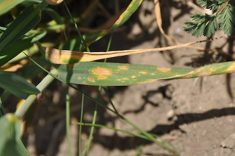Alberta Agriculture and Rural Development – Dr. Denis Gaudet, and his crew from the Lethbridge Research Centre, surveyed twenty-three fields of winter wheat for stripe rust in the Lethbridge, Cardston, Taber, Forty Mile and Cypress counties.
Two fields in the Cardston and Welling regions were observed with 60 per cent incidence (55 per cent severity) and 33 per cent incidence (22 per cent severity), respectively. The remainder of the fields in Southern Alberta were reported at very low incidence and severity (trace to 1 per cent) with one field near Coaldale reporting at 8 per cent incidence (8 per cent severity).
Read Also

Farming Smarter receives financial boost from Alberta government for potato research
Farming Smarter near Lethbridge got a boost to its research equipment, thanks to the Alberta government’s increase in funding for research associations.
The progression of the disease spread throughout the region remains slow. However, the situation can change rapidly. Producers are encouraged to go out and routinely monitor their winter wheat fields for the presence of the long, bright orange stripes on the upper leaves.
There is no evidence that stripe rust has moved to spring wheat so control measures are not recommended at this point. Weekly surveys for stripe rust will continue until the end of the growing season. In the meantime, producers should check with the Varieties of Cereal and Oilseed Crops for Alberta to verify the stripe rust resistance rating for their seeded spring wheat varieties.
Remember that varieties with stripe rust resistance rating of Moderate Resistance to Resistant will not need to be sprayed. Those with ratings of Intermediate to Susceptible should be monitored for stripe rust infection before spraying.
For individuals considering spraying fields with a fungicide, we recommend the following (in the context of this minor epidemic stage of stripe rust on winter wheat that is gaining slowly):
- Spray wheat when infection levels approach or exceed an average 1 infected plant/square metre.
- If producers choose to spray, it is important to protect the last 2 leaves that emerge (the flag and flag minus 1 leaves) because they contribute most to plant yield and quality.
- For winter wheat, now is the optimum plant development stage to apply fungicides (between head emergence and flowering) to protect against yield and quality losses to stripe rust.
For spring wheat, if producers notice stripe rust pustules in a susceptible crop, it would be prudent to consider spraying prevent yield losses.
Mike Harding
Plant Pathologist, AARD














